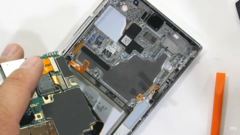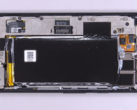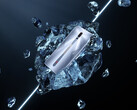Thermal management has become a practically essential part of smartphone design, particularly at higher ends of this market. Hardly a device can be launched these days without expansive mention of the heat-dissipation choices made for it. They can and have ranged from sophisticated materials such as graphite or graphene sheets; copper heatsinks, vapor chambers and even physical fans in the recent past.
This is mainly due to how fast and powerful mobile processors have become, not to mention the demanding, tasks often expected of them as a result. Some users might spend all day working and gaming on their phones, and it shows in the heat this activity can produce.
According to the market research group IDTechEx, the means of its dissipation falls into 2 main categories: heat spreaders (graphite/graphene sheets, and so on) or thermal interface materials (or TIMs, which re-direct the heat through the z-axis and might thus include thermal paste).
A number of OEMs, Huawei, Samsung, Nubia and Xiaomi included, have embraced either kind of solution as of late. However, IDTechEx asserts that they will become even more prevalent in the future thanks to the rise of 5G. Excessive heat can apparently cause some of its features to malfunction: therefore, even more high-end forms of cooling may be found in the marketing material of phones with this connectivity in the future.
Furthermore, IDTechEx insists that smartphone makers will also have to pay attention to the prospect of insulators for smartphones in the future. They may also have to be packed into these devices due to the issue of skin temperature and the resulting need to distribute heat across or away from surfaces as well as internal components.
These might include design tweaks such as an air-gap (could that be why Google included one in the Pixel 5?), but may again resort to scientifically-developed materials, as with the cooling solutions of today. As excessive as this sounds, the group asserts that this technology is already at work in the PC industry. They included the silica aerogel solution, made by Gore Industries, found in some Dell laptops today.
It has also developed similar protection for the mmWave 5G antennae in smartphones. Therefore, consumers might start to read potentially reassuring specs like these when shopping for their next phone in the near future.













